
DC Gear Motors
این که آیا شما یک مهندس فصلی هستید یا علاقه مندان به اتوماسیون ، انتخاب ما از محرک های دوار برای پاسخگویی به نیازهای متنوع شما طراحی شده است. قدرت دقت ، قابلیت اطمینان و تطبیق پذیری را در طیف وسیعی از محرک های چرخشی ما کشف کنید که می توانند پروژه های اتوماسیون شما را متحول کنند. آماده شوید تا برنامه های خود را با موتورهای Gear Gear برش ما بالا ببرید. اکنون مجموعه ما را مرور کنید و اولین قدم را برای شروع برنامه خود با DC Gear Motors بردارید.
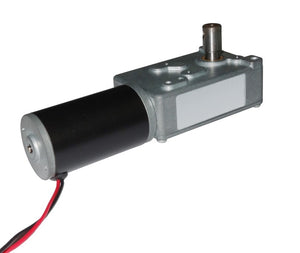
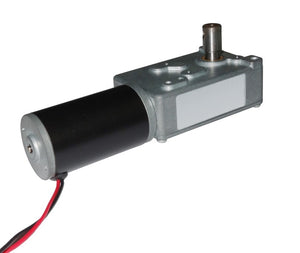
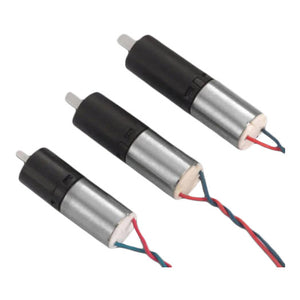
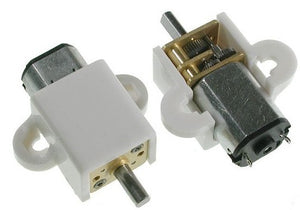
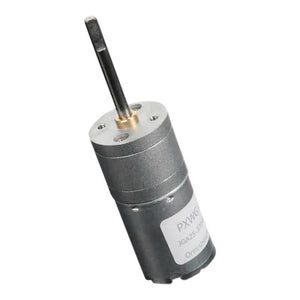
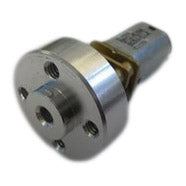
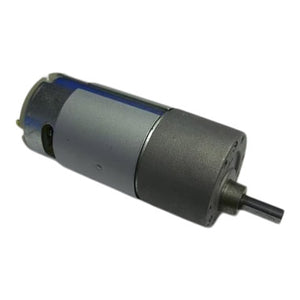
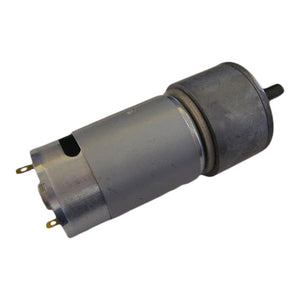
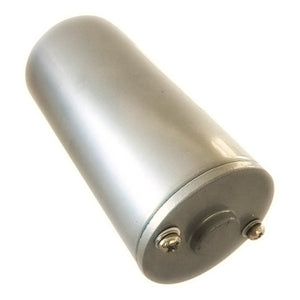
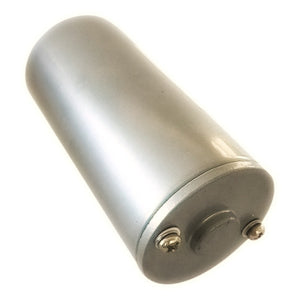
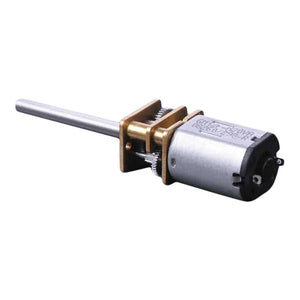
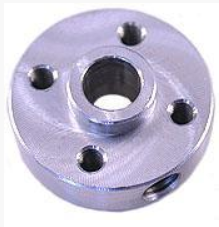
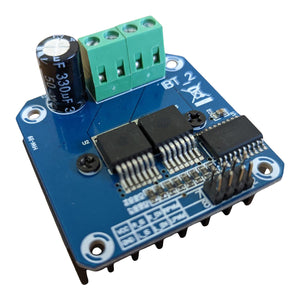
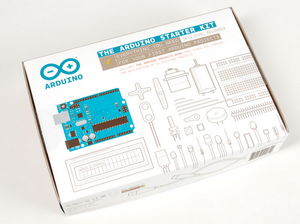
مقدمه ای برای محرک های چرخشی
محرک های چرخشی دستگاههای مکانیکی پویا هستند که به عنوان قلب کاربردهای بیشمار صنعتی ، تجاری و مسکونی خدمت می کنند. در هسته آنها ، این مؤلفه های همه کاره در تبدیل حرکت چرخشی به عملکرد مکانیکی دقیق و کنترل شده برتری دارند. بر خلاف محرک های خطی که حرکت خطی را ایجاد می کنند ، محرک های چرخشی بر تولید حرکت دایره ای یا چرخشی تمرکز می کنند. طراحی و مهندسی مبتکرانه آنها به آنها اجازه می دهد تا مجموعه ای از توابع را از باز کردن دریچه ها گرفته تا کنترل حرکت بازوهای رباتیک ، سنسورهای موقعیت یابی و ماشین آلات پیچیده استفاده کنند.
مزیت متمایز محرک های چرخشی در توانایی قابل توجه آنها در حرکت ظریف و دقیق به برنامه هایی که نیاز به حرکت دایره ای دارند نهفته است. مکانیسم آنها کنترل بی نظیری را ارائه می دهد و آنها را به انتخابی برای سناریوهایی تبدیل می کند که دقت آن بسیار مهم است. برخلاف محرک های خطی که حرکت خطی را ارائه می دهند ، محرک های چرخشی پتانسیل طیف گسترده ای از برنامه های حرکت چرخشی را باز می کنند و آنها را به یک دارایی اساسی در صنایع و پروژه های اتوماسیون تبدیل می کنند.
دقت و کنترل
محرک های چرخشی به دلیل ترکیبی از طراحی مهندسی و خصوصیات مکانیکی ذاتی آنها فوق العاده دقیق هستند. استفاده از چرخ دنده ها نقش مهمی در کنترل و تنظیم حرکت چرخشی محرک دارد. این چرخ دنده ها با حداکثر دقت برای اطمینان از حداقل واکنش و حداکثر کارآیی تولید می شوند. سیستم فعال سازی دنده تنظیمات خوب و حرکت کنترل شده را امکان پذیر می کند و به محرک اجازه می دهد تا با دقت قابل توجهی بچرخد یا چرخانده شود.
علاوه بر مکانیسم دنده خود ، محرک های چرخشی از طریق اجرای یاتاقان های با کیفیت بالا ، حرکات پایدار و دقیق را حفظ می کنند. این یاتاقان ها پشتیبانی و راهنمایی مهمی را برای اجزای چرخان محرک مکانیکی ارائه می دهند. این یاتاقان های دقیق با به حداقل رساندن بازی و wobble ، به یک حرکت چرخشی پایدار و مداوم کمک می کنند. هم افزایی بین طراحی دنده دقیق و یاتاقان های با کیفیت بالا منجر به یک محرک می شود که به دقت استثنایی می رسد و آن را به یک انتخاب ایده آل برای برنامه های صنعت که نیاز به حرکت کنترل شده و دقیق دارند ، تبدیل می کند.
هم افزایی بین طراحی دنده دقیق و یاتاقان های با کیفیت بالا منجر به یک محرک مکانیکی می شود که به سطح استثنایی از دقت می رسد. این دقت طیف گسترده ای از برنامه ها را در صنایع مختلف باز می کند. در ساخت ، از محرک های چرخشی در کارهایی مانند ماشینکاری دقیق ، مونتاژ روباتیک و بازرسی خودکار استفاده می شود که در آن حرکات دقیق و کنترل شده لازم است. در بخش هوافضا ، این محرک ها نقش مهمی در سطوح کنترل پرواز دارند ، که در آن تنظیمات دقیق برای عملیات پرواز ایمن و کارآمد لازم است.
نوع مختلف محرک های چرخشی چیست؟
متداول ترین انواع محرک های دوار از موتور الکتریکی برای منبع تغذیه خود استفاده می کنند. اما انواع مختلف موتور وجود دارد که وجود دارد ، که به روش های مختلفی برای متناسب با نیازهای مختلف در برنامه ها کار می کنند.
اول ما داریم موتورهای پله که برق را برای تولید یک حرکت چرخش مداوم با سرعت ثابت تبدیل می کند. Stepper Motors از این امر برتری دارد زیرا آنها برای حرکت در مراحل گسسته و نگه داشتن موقعیت ها به طور دقیق و بدون نیاز به بازخورد طراحی شده اند. موتورهای پله ای چرخش کامل را به مراحل مساوی تقسیم می کنند ، با حرکت از یک مرحله به مرحله دیگر هنگام دریافت یک سری پالس های برقی. هر پالس باعث می شود موتور زاویه ثابت را بچرخاند ، که به طراحی موتور و اندازه پله بستگی دارد.
دوم اینکه ما داریم موتورهای سروو که از بازخورد استفاده می کنند. بر خلاف موتورهای پله ای ، موتورهای سروو به مکانیسم های بازخورد مانند رمزگذارها یا حل کننده ها نیاز دارند تا اطلاعاتی در مورد موقعیت واقعی موتور ، سرعت و گاهی اوقات حتی گشتاور ارائه دهند. این بازخورد سیستم کنترل را قادر می سازد تا عملکرد موتور را در زمان واقعی تنظیم کند ، و باعث می شود Servo Motors برای برنامه های صنعت که نیاز به عملکرد بالا و پاسخگویی دارند ، مناسب باشد. حتی اگر موتورهای سروو از مزایای دقت ، سرعت و پاسخگویی بالاتر نسبت به موتورهای پله ای برخوردار باشند ، به دلیل نیاز به سیستم های بازخورد دقیق و الگوریتم های کنترل ، می توانند پیچیده تر باشند. آنها همچنین به دلیل اجزای اضافه شده و فناوری مورد نیاز برای کنترل حلقه بسته ، به طور کلی نسبت به موتورهای پله گران تر هستند.
موتورهای دیگری وجود دارند که از انرژی هیدرولیک و پنوماتیک برای رانندگی یک محرک استفاده می کنند. این محرک ها معمولاً بزرگتر و قدرتمندتر از همتای برقی آن هستند.
.
سوالات متداول
یک محرک دوار ، که به عنوان موتور دنده DC نیز شناخته می شود ، همتای پویا یک محرک خطی برقی است. بر خلاف همتایان خطی آنها ، محرک های چرخشی در حرکت چرخشی تخصص دارند و نیروی چرخش اساسی را برای جابجایی اجزای مختلف در دستگاه ها و سیستم ها فراهم می کنند.
آنها را به عنوان قلب چرخش یک ماشین تصور کنید ، حرکات سیال را در ماشین آلات صنعتی ، دریچه ها ، روباتیک و حتی امکان پذیر می کند موتورهای برف پاک کن شیشه ایبشر به لطف تطبیق پذیری آنها ، محرک های چرخشی در اندازه های وسیعی از اندازه ها قرار می گیرند و به برنامه های متنوع پذیرایی می کنند.
در هسته موتور دنده DC موتور دنده برقی قرار دارد که وظیفه تبدیل حرکت خطی به یک حرکت چرخشی قابل استفاده را دارد. با استفاده از چرخ دنده ها ، سرعت موتور در حالی که گشتاور افزایش می یابد کاهش می یابد و از حرکت چرخشی عملی و کنترل شده برای کاربردهای روزمره اطمینان می یابد.
محرک های چرخشی برای مقاومت در برابر شرایط سخت طراحی شده اند و برای برنامه های محیط زیست در فضای باز و سخت مناسب هستند. بسیاری از محرک های چرخشی با آب بندی و محافظت در برابر گرد و غبار ، آب و سایر آلاینده ها همراه هستند و عملکرد قابل اعتماد را حتی در شرایط چالش برانگیز تضمین می کنند.
این موتورهای دنده DC اغلب با استفاده از مواد بادوام مانند فولاد ضد زنگ یا پوشش های مقاوم در برابر خوردگی ساخته می شوند و آنها را در برابر زنگ زدگی و آسیب های محیطی مقاوم می کنند. علاوه بر این ، برخی از مدل ها با یک رتبه بندی می شوند رتبه IP (محافظت از Ingress)، که نشان دهنده سطح محافظت آنها در برابر ذرات جامد و مایعات است. به عنوان مثال ، یک محرک دارای رتبه IP67 دارای گرد و غبار است و می تواند در برابر غوطه وری موقت در آب تا عمق 1 متر مقاومت کند.
این که آیا در ساخت و ساز ، دریایی ، کشاورزی ، هوافضا یا هر صنعت دیگری قرار دارد ، محرک های چرخشی ثابت می کنند که کارگاههای قابل اعتماد هستند و کنترل دقیق حرکت را حتی در سخت ترین محیط های فضای باز فراهم می کنند. قبل از انتخاب یک محرک ، بررسی رتبه بندی خاص IP و مناسب بودن آن برای اطمینان از پاسخگویی به خواسته های برنامه شما ضروری است.
موتور DC Gear نام دیگری برای محرک دوار است. موتور DC Gear نوعی موتور الکتریکی مجهز به مکانیسم دنده است. این قدرت یک موتور DC (جریان مستقیم) را با یک سیستم فعال سازی دنده ترکیب می کند تا حرکت چرخشی کنترل شده و کارآمد را انجام دهد. چیدمان دنده درون موتور ضمن افزایش خروجی گشتاور ، سرعت چرخش موتور را کند می کند و آن را برای برنامه هایی که نیاز به چرخش دقیق و قدرتمند دارند ، ایده آل می کند.
موتورهای DC Gear به طور گسترده در صنایع و برنامه های مختلف مانند روباتیک ، اتوماسیون ، خودرو و لوازم خانگی مورد استفاده قرار می گیرند. تطبیق پذیری ، قابلیت اطمینان و توانایی ارائه گشتاور لازم ، آنها را به یک انتخاب محبوب برای راه حل های کنترل RotaryMotion تبدیل می کند.
در Firgelliauto ، ما طیف متنوعی از موتورهای دنده DC با کیفیت بالا را ارائه می دهیم که هر یک متناسب با نیازهای خاص هستند. این که آیا شما برای یک پروژه در مقیاس کوچک یا یک موتور قوی برای برنامه های سنگین به یک موتور جمع و جور نیاز دارید ، انتخاب ما را پوشش داده است. به کارآیی و عملکرد موتورهای DC Gear ما اعتماد کنید تا پروژه های اتوماسیون خود را به ارتفاعات جدید بالا ببرید.
در حالی که هر دو DC Motors و DC Gear Motors شباهت هایی را به عنوان موتورهای برقی که از جریان مستقیم استفاده می شوند ، به اشتراک می گذارند ، در طراحی و عملکرد آنها متفاوت هستند.
کارکردهای اساسی:- موتور DC: یک موتور DC انرژی الکتریکی را به حرکت مکانیکی تبدیل می کند. با سرعت ثابت که توسط ولتاژ ورودی تعیین می شود می چرخد.
- موتور دنده DC: یک موتور DC Gear یک موتور DC را با سیستم دنده ترکیب می کند. مکانیسم چرخ دنده ضمن افزایش خروجی گشتاور ، سرعت چرخش موتور را کاهش می دهد و چرخش های کنترل شده و قدرتمندی را فراهم می کند.
- موتور DC: یک موتور DC استاندارد دارای سرعت ثابت است که توسط ولتاژ کاربردی تعیین می شود. این می تواند به سرعت های بالایی برسد اما ممکن است فاقد گشتاور لازم برای برنامه های خاص باشد.
- موتور دنده DC: سیستم دنده در موتور دنده DC کنترل سرعت متغیر را امکان پذیر می کند و گشتاور را افزایش می دهد و باعث می شود آن را برای برنامه های کاربردی که نیاز به حرکت دقیق و قدرتمند دارند مناسب باشد.
- موتور DC: موتورهای DC معمولاً در برنامه هایی که سرعت ثابت و گشتاور پایین تر کافی است ، مانند فن ها ، دمنده ها و دستگاه های کوچک استفاده می شود.
- موتور دنده DC: DC Gear Motors برای برنامه هایی که نیاز به چرخش کنترل شده و آهسته با گشتاور بالاتر دارند ، از جمله روباتیک ، اتوماسیون ، سیستم های نقاله و مکانیسم های خودرو ایده آل هستند.
- موتور DC: موتورهای DC به دلیل طراحی ساده خود به طور کلی در تبدیل انرژی الکتریکی به انرژی مکانیکی کارآمدتر هستند.
- موتور دنده DC: اگرچه سیستم فعال سازی دنده برخی از تلفات انرژی را معرفی می کند ، اما موتورهای دنده DC هنوز هم بسیار کارآمد هستند ، به خصوص هنگامی که برای کارهای خاص بهینه سازی می شوند.
- موتور DC: موتورهای استاندارد DC جمع و جور و سبک هستند ، مناسب برای برنامه های دارای فضای محدود.
- موتور دنده DC: DC Gear Motors به دلیل افزودن مکانیسم دنده به طور معمول کمی بزرگتر و سنگین تر است ، اما قابلیت گشتاور برتر را ارائه می دهند.
DC Gear Motors نقش مهمی در انواع صنایع بازی می کند و حرکات دقیق و کنترل شده ای را برای برنامه های بیشمار ارائه می دهد. در اینجا شش منطقه مهم وجود دارد که موتورهای دنده DC استفاده گسترده ای پیدا می کنند:
اتوماسیون و روباتیک- DC Gear Motors برای حرکت سلاح های روباتیک و سیستم های اتوماسیون یکپارچه است. آنها روبات ها را قادر می سازند تا با دقت ، مانند مونتاژ ، بسته بندی و کار با مواد را انجام دهند. این موتورها حرکت چرخشی صاف و دقیق در صنایع مختلف ، از تولید تا تدارکات را تضمین می کنند.
- در بخش خودرو ، DC Gear Motors در کارکردهایی مانند کنترل پنجره برق ، تنظیم صندلی و حرکت برف پاک کن شیشه جلو استفاده می شود. اندازه و توانایی فشرده آنها در ارائه سطح خاص گشتاور ، آنها را برای تقویت راحتی و راحتی در وسایل نقلیه ضروری می کند.
- DC Gear Motors در سازها و دستگاه های پزشکی ، اطمینان از حرکت کنترل شده در تجهیزات مانند پمپ های تزریق ، دستگاه های تشخیصی و ابزارهای جراحی روباتیک کمک می کند. قابلیت اطمینان آنها در حفظ دقت و ایمنی در برنامه های مراقبت های بهداشتی بسیار مهم است.
- از لوازم آشپزخانه گرفته تا وسایل مراقبت شخصی ، DC Gear Motors عملکردهای مختلفی را امکان پذیر می کند. آنها مکانیسم های برق در مخلوط ها ، چرخ های قهوه ، مسواک برقی و سایر موارد خانگی را تضمین می کنند و از عملکرد مداوم و راحتی کاربر اطمینان می دهند.
- صنایعی مانند ساخت و دست زدن به مواد برای حرکت کنترل شده در سیستم های نقاله ، خطوط مونتاژ و ماشین آلات بسته بندی به موتورهای دنده DC متکی هستند. توانایی آنها در ارائه حرکت دقیق باعث افزایش کارایی تولید و کیفیت محصول می شود.
- موتورهای دنده DC در برنامه های هوافضا برای کنترل اجزای مانند فلپ ها ، دریچه ها و محرک های مکانیکی استفاده می شوند. در دفاع ، آنها در سیستم های راهنمایی موشکی ، تجهیزات نظارتی و وسایل نقلیه هوایی بدون سرنشین (پهپادها) استفاده می کنند و از کنترل حرکت چرخشی قابل اعتماد و دقیق در سناریوهای بحرانی اطمینان می دهند.
انتخاب موتور دنده مناسب شامل یک فرآیند استراتژیک با محوریت نیازهای گشتاور و سرعت خروجی است. در اینجا یک گام به گام برای راهنمایی شما وجود دارد:
نیازهای گشتاور را ارزیابی کنید- با درک نیرو شروع کنید یا خواسته های برنامه خود را بارگیری کنید. گشتاور مورد نیاز برای غلبه بر مقاومت را محاسبه کنید ، اطمینان حاصل کنید که موتور می تواند بار کار را تحمل کند. فاکتورسازی در جنبه هایی مانند بار اولیه ، اصطکاک و تغییرات شیب ، تصویری واضح از دامنه گشتاور لازم برای عملکرد بهینه به شما می دهد.
- سرعت حرکتی را که متناسب با برنامه شما است تعیین کنید. چه این یک حرکت آهسته و کنترل شده باشد یا یک عمل سریعتر ، شناسایی سرعت خروجی ایده آل به انتخاب نسبت دنده مناسب کمک می کند. تجارت بین سرعت و گشتاور را در نظر بگیرید ، زیرا نسبت دنده بالاتر سرعت کاهش یافته اما گشتاور را افزایش می دهد.
- سنج چقدر موتور در برنامه شما عملیاتی خواهد شد. آیا مداوم ، متناوب یا پراکنده است؟ تطبیق چرخه وظیفه موتور با الگوی استفاده شما ، قابلیت اطمینان را تضمین می کند و از گرمای بیش از حد جلوگیری می کند. این مرحله از ساییدگی و پارگی زودرس جلوگیری می کند و باعث افزایش طول عمر موتور می شود.
- ابعاد فیزیکی موتور دنده بسیار مهم است. فضای موجود برای نصب و ادغام را اندازه گیری کنید. یک موتور جمع و جور که یکپارچه در راه اندازی شما قرار می گیرد ، استفاده کارآمد را بدون به خطر انداختن عملکرد تضمین می کند. ضمن اطمینان از هماهنگی آن با گشتاور و نیازهای سرعت ، فاکتور فرم را در اولویت قرار دهید.
- برای تأیید سازگاری به داده های فنی سازنده بروید. منحنی های سرعت گشتاور ، رتبه بندی برق ، ظرفیت های بار و گزینه های نسبت دنده را مطالعه کنید. توجه به این جزئیات تضمین می کند که موتور دنده انتخاب شده به طور هماهنگ با گشتاور برنامه و سرعت خروجی شما هماهنگ است.
Top Blog Posts for Rotary Actuators
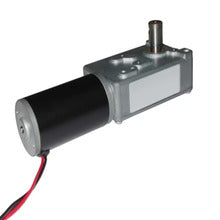
Rotary actuators or DC gear motors are mechanical devices that create rotary motion to produce torque usually in either direction. They can be found in a...
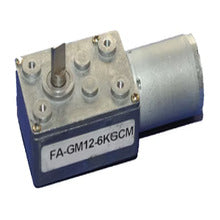
Discover the limitless applications, high precision, and unparalleled performance of rotary actuators. Find out how to select the perfect actuator and wire it like a...
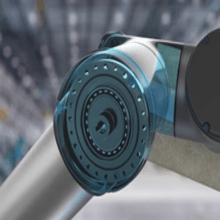
Rotary actuators aid rotary movement at varying velocities appropriate for both quick as well as gradual motions used commonly in assembly automation while playing a...
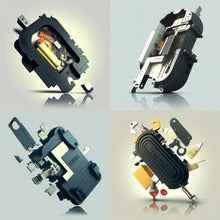
What is a DC gear motor? DC gear motors are the siblings of electric linear actuators, but instead of linear motion, they rotate or turn....
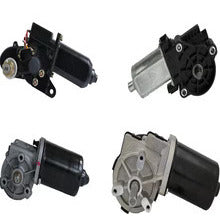
Explore the comprehensive guide to DC gear motors in this in-depth blog post. Unravel the powerful combination of DC motors and gearboxes, unleashing precision motion...


